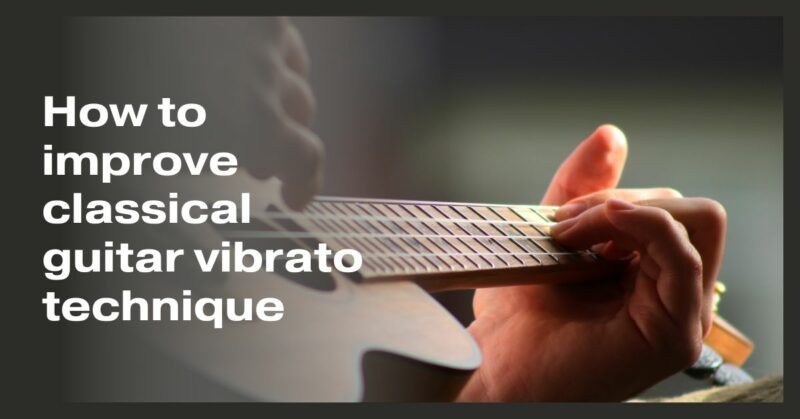Vibrato is a beautiful and expressive technique used by classical guitarists to add depth, warmth, and emotion to their playing. It involves oscillating the pitch of a note by rapidly and subtly varying the string tension. While vibrato is commonly associated with vocalists and string players, it is an essential skill for classical guitarists looking to infuse their music with nuance and artistry. In this article, we’ll explore how to improve your classical guitar vibrato technique and unlock its full expressive potential.
- Understand the Basics of Vibrato
Before diving into practice, it’s crucial to grasp the fundamentals of vibrato:
- Finger Placement: Vibrato is primarily executed with the fingertips, typically the index or middle finger. The finger should be positioned just behind the fret that’s producing the note.
- String Movement: Vibrato involves rocking the fingertip back and forth along the string, creating small pitch oscillations. This movement should be subtle, controlled, and rhythmically consistent.
- Variability: Vibrato can vary in speed, width, and depth, depending on the musical context and your artistic interpretation. Experiment with different styles to discover what suits your playing best.
- Develop Finger Strength and Independence
Effective vibrato requires strong and independent fingers. Here’s how to work on this:
- Finger Strength: Incorporate finger exercises into your practice routine to build finger strength. Finger presses and squeezes, as well as finger push-ups on a tabletop, can help strengthen your fretting fingers.
- Independence: Isolate each finger and practice rocking it back and forth independently on a string. This exercise will help you develop precise finger control.
- Control String Tension
Vibrato is all about controlling the tension of the string. To improve this control:
- Start Slowly: Begin by practicing slow, wide vibrato movements. This allows you to focus on controlling the string tension without rushing.
- Gradually Increase Speed: As you become more comfortable, increase the speed of your vibrato while maintaining control. Remember that vibrato should always be controlled and deliberate, even at higher speeds.
- Work on Rhythmic Consistency
Maintaining a consistent rhythm is essential for expressive vibrato. To improve rhythmic consistency:
- Metronome Practice: Use a metronome to practice vibrato at various tempos. Start slow and gradually increase the tempo as you become more confident.
- Vary the Rhythms: Experiment with different vibrato rhythms, such as triplet patterns, to add variety and musicality to your playing.
- Listen and Learn
Listening to accomplished classical guitarists can provide valuable insights into vibrato techniques and styles. Pay close attention to how different players use vibrato to convey emotions and enhance their performances. Try to emulate their techniques while incorporating your personal interpretation.
- Incorporate Vibrato into Repertoire
Practice vibrato within the context of your repertoire. Choose pieces or passages where vibrato is appropriate and experiment with different vibrato styles to find what works best for the music.
- Seek Guidance and Feedback
Consider taking lessons from a qualified classical guitar teacher who can provide personalized guidance and feedback on your vibrato technique. They can help you refine your technique and offer specific exercises to address any weaknesses.
Conclusion
Mastering classical guitar vibrato is a journey that requires patience, practice, and dedication. By understanding the fundamentals, developing finger strength and independence, controlling string tension, working on rhythmic consistency, listening to accomplished players, incorporating vibrato into your repertoire, and seeking guidance when needed, you can elevate your vibrato technique to new heights. With time and consistent effort, you’ll be able to use vibrato as a powerful tool to convey emotion and artistry in your classical guitar playing, captivating audiences with your expressive and nuanced performances.


